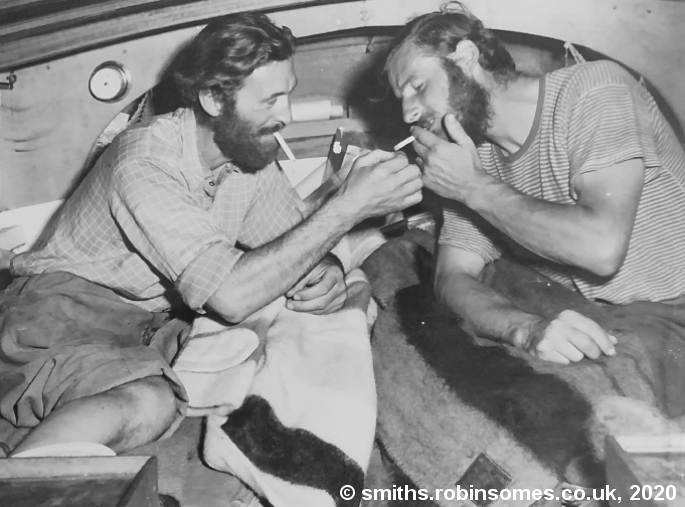
Charles Violet was born in 1912, at Marsden, near Stafford. Educated at Wellington Grammar School, Charles initially worked for the Goodyear Tyre Co. in Wolverhampton, and later for Sunbeam and Austin. Whilst there, he met a clergyman who ran a school in Bermuda, who offered Charles a teaching post in the school.
Charles saw the chance of adventure, and accepted, staying there until the outbreak of World War 2. Returning to England at the start of the war, he expected to enter the Army. However, he found he was rejected, due to disablement – a leg injury sustained in a 1930 motorcycle accident which had left him with limited mobility in one knee. He chose instead to take his Navigation Certificate at Leith Nautical College, then returned to Bermuda to work as a superintendent in an approved school, teaching sailing and navigation.
Back in England after the war, he married and moved to Worcester, with his wife and daughter, though still continuing some work in Bermuda. In 1948 he met Stan Smith, quite by accident, in the Dart estuary, setting off the chain of events that changed both their lives, and those of many others.
Charles went to Canada in February 1950 with Stan and Colin Smith, and the Nova Espero, to attempt setting up the first peace colony. After the brothers’ return, Charles and Nova Espero remained in Canada; in July that year, he attempted a single-handed Atlantic crossing to return to the UK. However, two days out, he was badly burned in an accident with a paraffin stove, and had to return to Nova Scotia.
When he, and Nova Espero, finally shipped back to England in November, he and Stan Smith started renovating the boat, adding a proper cabin, and a mizzen mast. In May 1951, he and Stan set off from the Festival of Britain site, to cross the Atlantic again. Forced to divert via the Azores for repairs, they crossed to Nova Scotia, eventually reaching New York on September 11th, after a journey of 120 days. This story is told in Smith and Violet’s book “The Wind Calls The Tune”.
Subsequently, Charles undertook two single-handed journeys through the canals and rivers of France, and around the Mediterranean. The first of these journeys, a 13-month trip from May 1952 to June 1953, is described in his book “Solitary Journey“. The second journey, in 1954 – 55, was intended to go via the Mediterranean to the Black Sea, then down the rivers Don and Volga into the Caspian Sea. The plan was sadly curtailed by the refusal of his travel permission by the Russians.
After the second solo journey, he stopped his long-distance seafaring, as he had taken an executive job in the air industry, but he maintained a strong interest in yacht design, as well as writing about boats. He designed a 27-ft yawl, “Sea King”, the prototype for which won the Clark-Neill Trophy for racing in the 1960 Clyde Week Regatta.
In the 1970s, Charles retired to live on his smallholding in Lampeter in Wales, and had a boat named Nova Espero II in the harbour at Fishguard. He died in 2007, aged 94.

All content © Robin Somes unless otherwise indicated.
